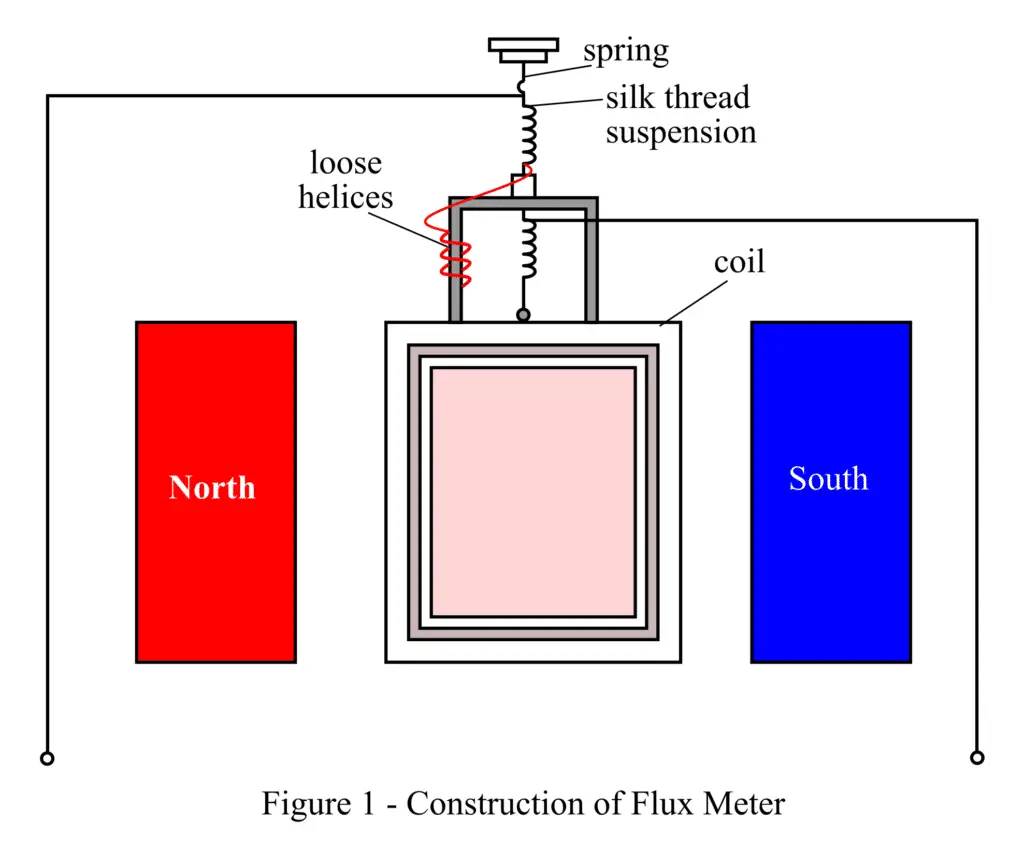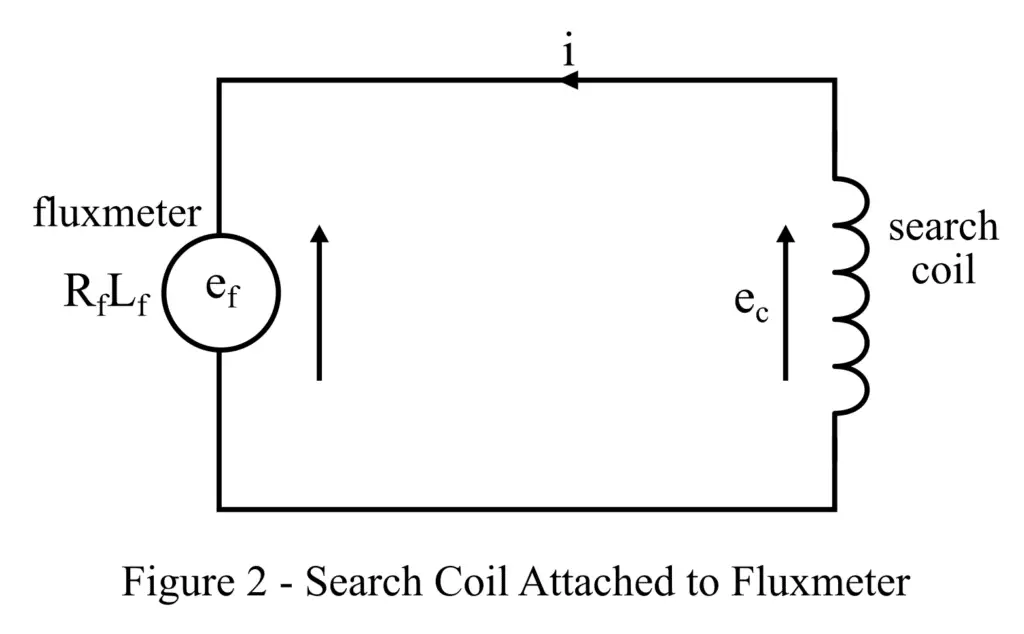In this article, we will discuss the definition, construction, advantages and disadvantages, and applications of a fluxmeter. Magnetic flux is an important electromagnetic property, which is represented as magnetic field lines surrounding a permanent magnet.
What is a Fluxmeter?
Fluxmeter is defined as a measuring instrument used to determine the amount of magnetic flux generated by a ferromagnetic material. Fluxmeter has been used since the beginning of the 19th century for estimating the magnetic characteristics of the earth’s surface. These days, there have been tremendous advancements in the design of flux meters, with digital flux meters being commonly used for several applications.
Having bulky electromagnetic damping and low controlling torque, flux meters are considered an advanced version of the ballistic galvanometer.
What is the Working Principle of a Fluxmeter?
The fluxmeter is based on the principle of operation called Faraday’s law of electromagnetism. According to this law, a current-carrying conductor placed in fluctuating magnetic flux experiences magnetic force which results in the induction or generation of voltage within the conductor. Alternately, voltage is also induced on the conductor when a conductor in motion is placed in a constant magnetic field (i.e. between two permanent magnets).
The fluctuating magnetic flux is equal in magnitude to that of the voltage induced on the current-carrying conductor. Therefore, the flux meter is a device that is comprised of a moving coil positioned in a constant magnetic field generated by a stationary permanent magnet. The flux is measured by the fluxmeter by measuring the change in voltage obtained as a result of the induced magnetic flux, as the induced voltage and magnetic flux are directly proportional to each other. A calibration meter is used to determine the fluctuating voltage induced on the moving coil within the fluxmeter.
Construction of the Flux Meter

The fluxmeter construction is illustrated in Figure 1 above. It can be observed from the above figure that the fluxmeter is comprised of mainly two major components namely – moving coil and permanent magnets. The moving coil is placed between the stationary magnetic poles of the permanent magnet in order to induce a voltage across the coil, which in turn is used to measure the generated flux.
The moving coil is freely suspended via a spring and a silk thread suspension. Loose helices, which are made up of extremely thin silver strips are also attached to the moving coil in order to transfer the applied current from the supply to the coil. This applied current passed through the moving coil is beneficial for minimizing the controlling torque. Additionally, air friction-related damping is relatively insignificant.
Operation of the Fluxmeter

As shown in the above figure a search coil is connected across the ends of the fluxmeter instrument. There are two ways to fluctuate the magnetic flux across the search coil. The first way is to remove the magnetic field from the coil. While the second way is to reverse the polarity of the magnetic field surrounding the search coil. As a result of the fluctuating magnetic flux, electromotive force (emf) is generated across the search coil.
This emf in turn induces the flow of current across the magnetically charged coil. This induced current then passes through the fluxmeter device, resulting in the deflection of the pointer present in the fluxmeter instrument. Therefore, it is evident that the fluctuating magnetic flux of the search coil is directly proportional to the deflection of the fluxmeter needle.
On reducing the fluctuations in the magnetic flux across the coil, the search coil comes to a halt due to the phenomenon of electromagnetic damping. Due to the existing low resistivity between the search coil and the flux meter, electromagnetic damping is quite high.
Advantages of Fluxmeter
The merits of using a fluxmeter instrument for measuring the magnetic flux are as follows.
- The coil defection is independent of the duration of flux variation.
- The fluxmeter device is lightweight and hence portable.
- Weber meters are used to calibrate the scale of the fluxmeter. Therefore, it is easier to determine the magnetic flux reading as there is no unit conversion involved.
- A flux meter is highly useful for the characterization of different magnets due to its capability of integrating flux across a broader region.
- The net magnetic capability of any material can be determined by using the flux meter device.
Disadvantages of Fluxmeter
The demerits of using a fluxmeter instrument for measuring the magnetic flux are as follows.
- The flux meters are comparatively less sensitive for measuring the magnetic flux in comparison to other measuring devices.
- The fluxmeter provides less accurate readings of magnetic flux.
Applications of Fluxmeter
Fluxmeters are used across a wide range of applications, some of which are listed below.
- Fluxmeters are utilized in quality control tasks and for inspection due to the ease of taking the readings from the device.
- Fluxmeters also find their application in mapping the hysteresis loop.
- Fluxmeter also has the ability to be used for iron testing.
- Most commonly flux meter devices are used for measuring the generated magnetic fields or flux across any electronic device.
Conclusion
In conclusion, the flux meters find a wide variety of applications ranging from small-scale measurements to numerous industrial applications as listed in this article. This is possible due to the simplicity of the device when it comes to taking the readings and with the added advantage of portability.